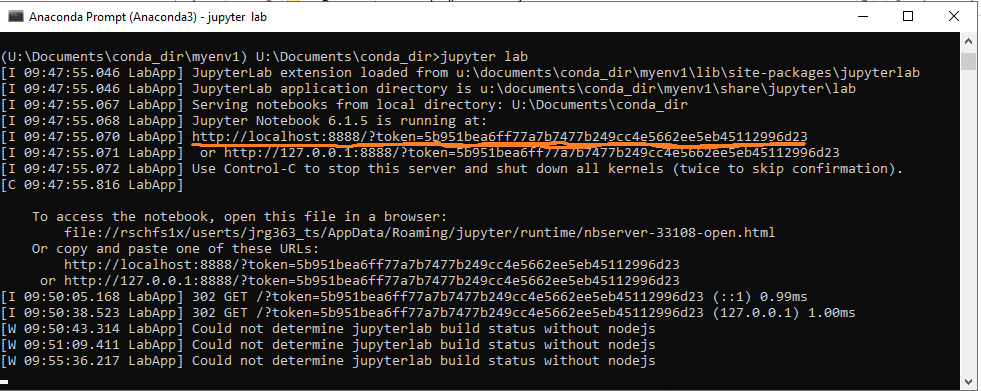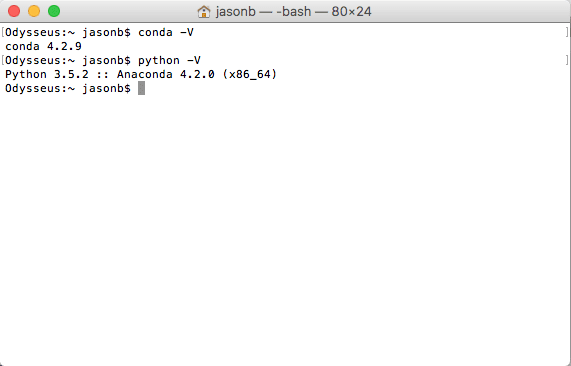

- CONDA INSTALL PACKAGE IN VIRTUALENV HOW TO
- CONDA INSTALL PACKAGE IN VIRTUALENV SOFTWARE
- CONDA INSTALL PACKAGE IN VIRTUALENV CODE
You should specify the python version, in case you have multiple versions installed. We use the following command to create and set up env_1 in the local environment: virtualenv env_1 -p /usr/local/bin/python3 # create virtual environment env_1įolder env_1 will be created under the current working directory. We highly recommend that you create an isolated virtual environment locally first, so that the move to a distributed virtualenv will be more smooth. Sc.parallelize(range(1,10)).map(lambda x : np._version_).collect() Using virtualenv in the Local Environmentįirst we will create a virtual environment in the local environment.
CONDA INSTALL PACKAGE IN VIRTUALENV CODE
We save the code in a file named spark_virtualenv.py.įrom pyspark import SparkContext if _name_ = "_main_": This piece of code uses numpy in each map function. In this example we will use the following piece of code. Batch modeįor batch mode, I will follow the pattern of first developing the example in a local environment, and then moving it to a distributed environment, so that you can follow the same pattern for your development. In HDP 2.6 we support batch mode, but this post also includes a preview of interactive mode. Interactive mode, using a shell or interpreter such as pyspark-shell or zeppelin pyspark.Batch mode, where you launch the pyspark app through spark-submit.There are two scenarios for using virtualenv in pyspark:
CONDA INSTALL PACKAGE IN VIRTUALENV HOW TO
Now I will talk about how to set up a virtual environment in PySpark, using virtualenv and conda. Python 2.7 or Python 3.x must be installed (pip is also installed).Each node must have internet access (for downloading packages).Note that pip is required to run virtualenv for pip installation instructions, see. Either virtualenv or conda should be installed in the same location on all nodes across the cluster. All nodes must have either virtualenv or conda installed, depending on which virtual environment tool you choose. Hortonworks supports two approaches for setting up a virtual environment: virtualenv and conda.

(This feature is currently only supported in yarn mode.) Prerequisites In this article, I will talk about how to use virtual environment in PySpark. This eases the transition from local environment to distributed environment with PySpark. We recently enabled virtual environments for PySpark in distributed environments. For such scenarios with large PySpark applications, `-py-files` is inconvenient.įortunately, in the Python world you can create a virtual environment as an isolated Python runtime environment. And, there are times when you might want to run different versions of python for different applications. Sometimes a large application needs a Python package that has C code to compile before installation. A large PySpark application will have many dependencies, possibly including transitive dependencies. Zenodo.For a simple PySpark application, you can use `-py-files` to specify its dependencies.


CONDA INSTALL PACKAGE IN VIRTUALENV SOFTWARE
The conda-forge Project: Community-based Software Distribution Built on the conda Package Format and Ecosystem. If you'd like to credit conda-forge in your work, you can cite our zenodo entry like thisĬonda-forge community. Unlike Miniconda, these supportĪRMv8 64-bit (formally known as `aarch64`). Installers, with the added feature that conda-forge is theĭefault channel. Miniforge is an effort to provide Miniconda-like For example, to install aĬonda-forge package into an existing conda environment:Ĭonda config -set channel_priority strict The built distributions are uploaded to /conda-forgeĪnd can be installed with conda. Thanks to some awesome continuous integration providers (AppVeyor, Azure Pipelines, CircleCI and TravisCI),Įach repository, also known as a feedstock, automaticallyīuilds its own recipe in a clean and repeatable way on Windows, Linux and OSX. Conda-forge is a GitHub organization containing repositories of conda recipes.


 0 kommentar(er)
0 kommentar(er)
